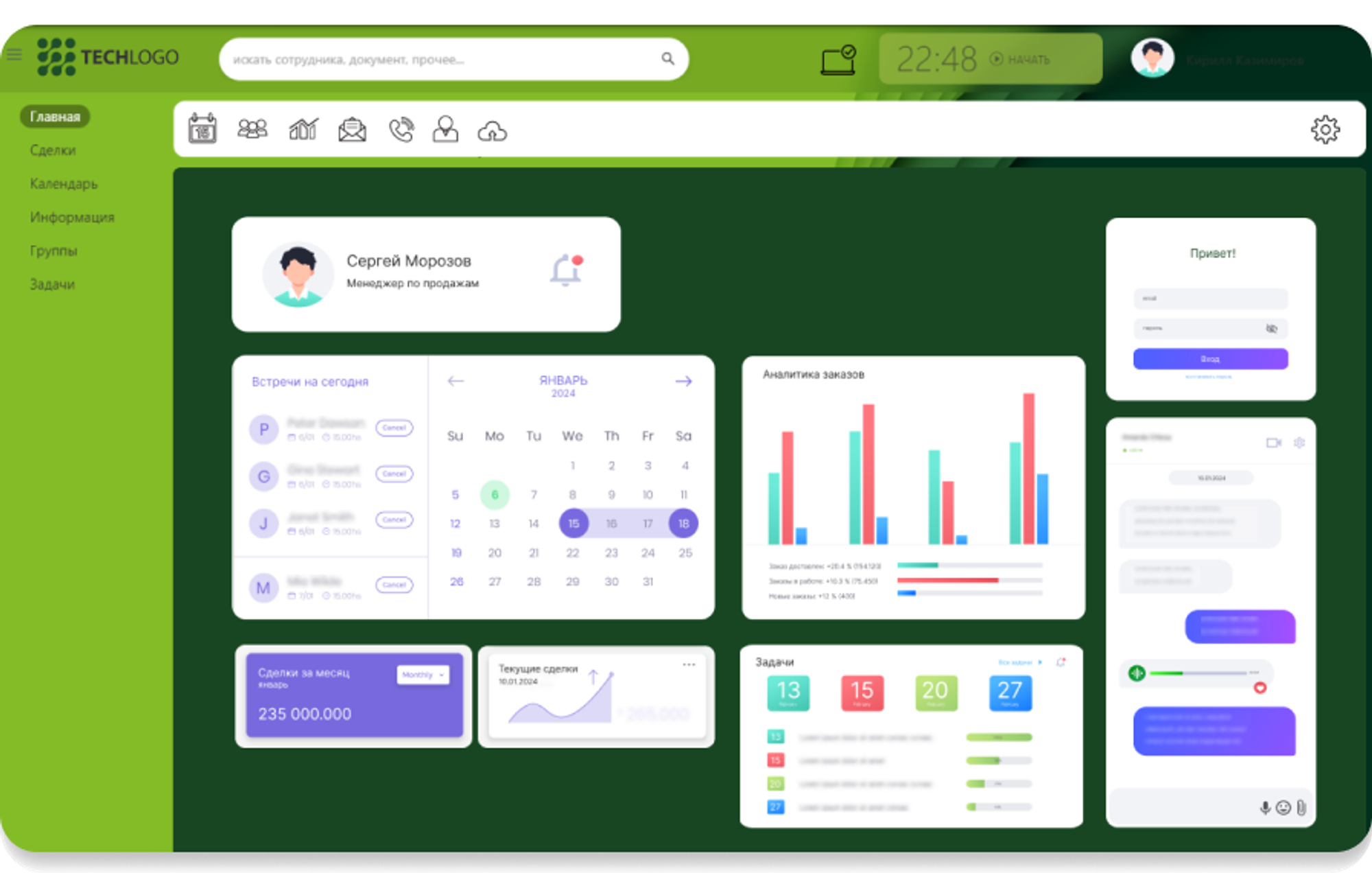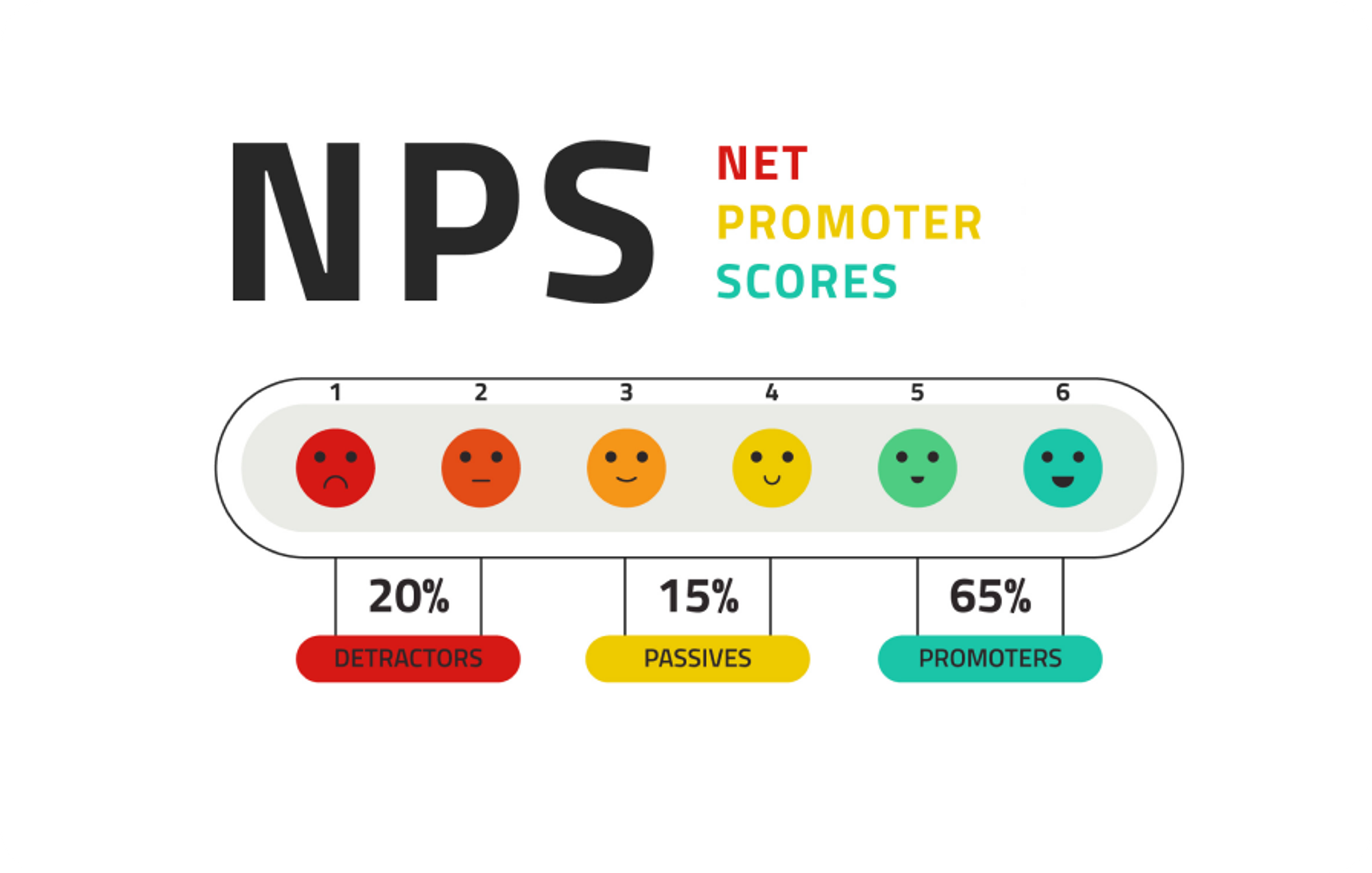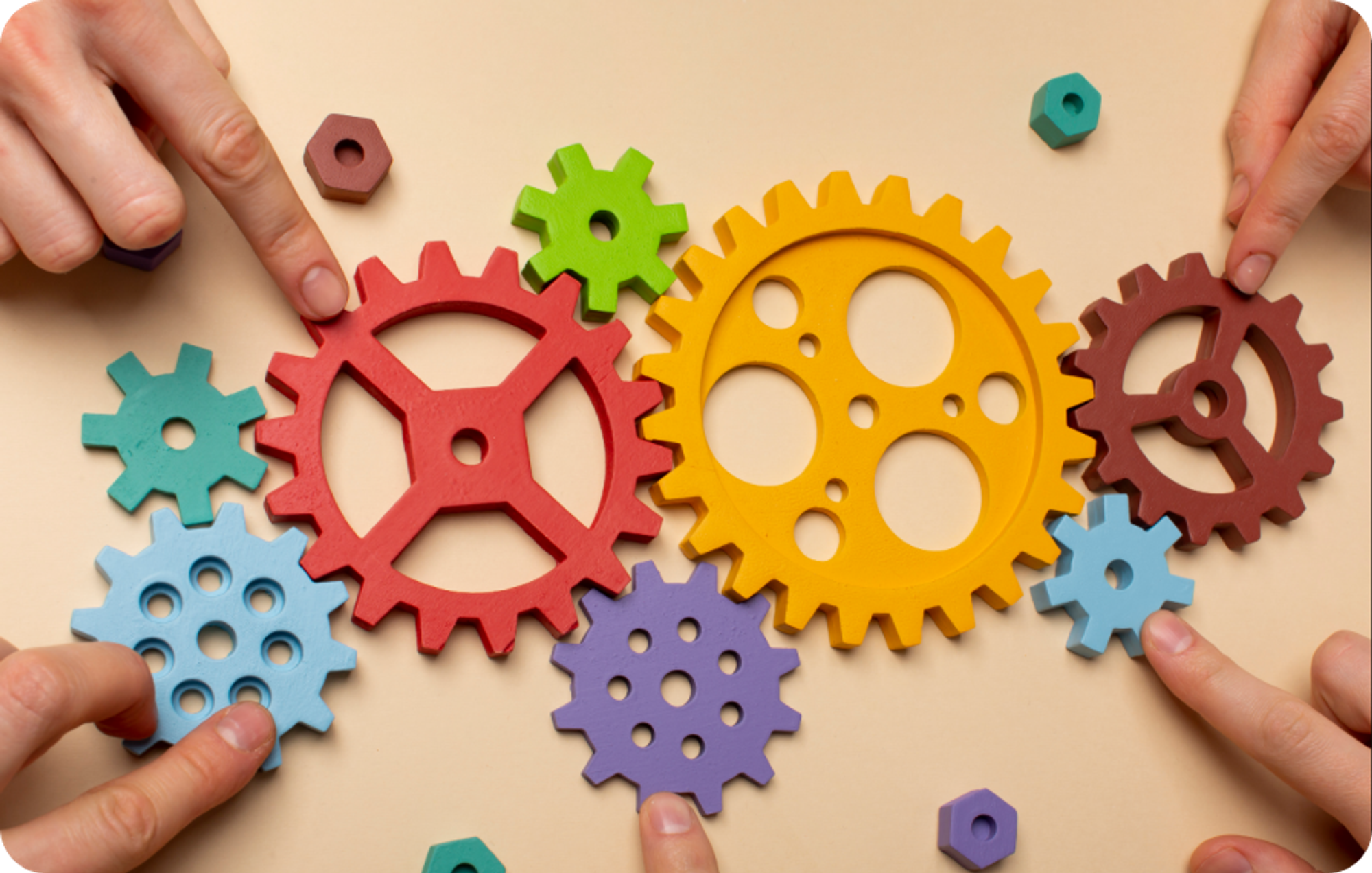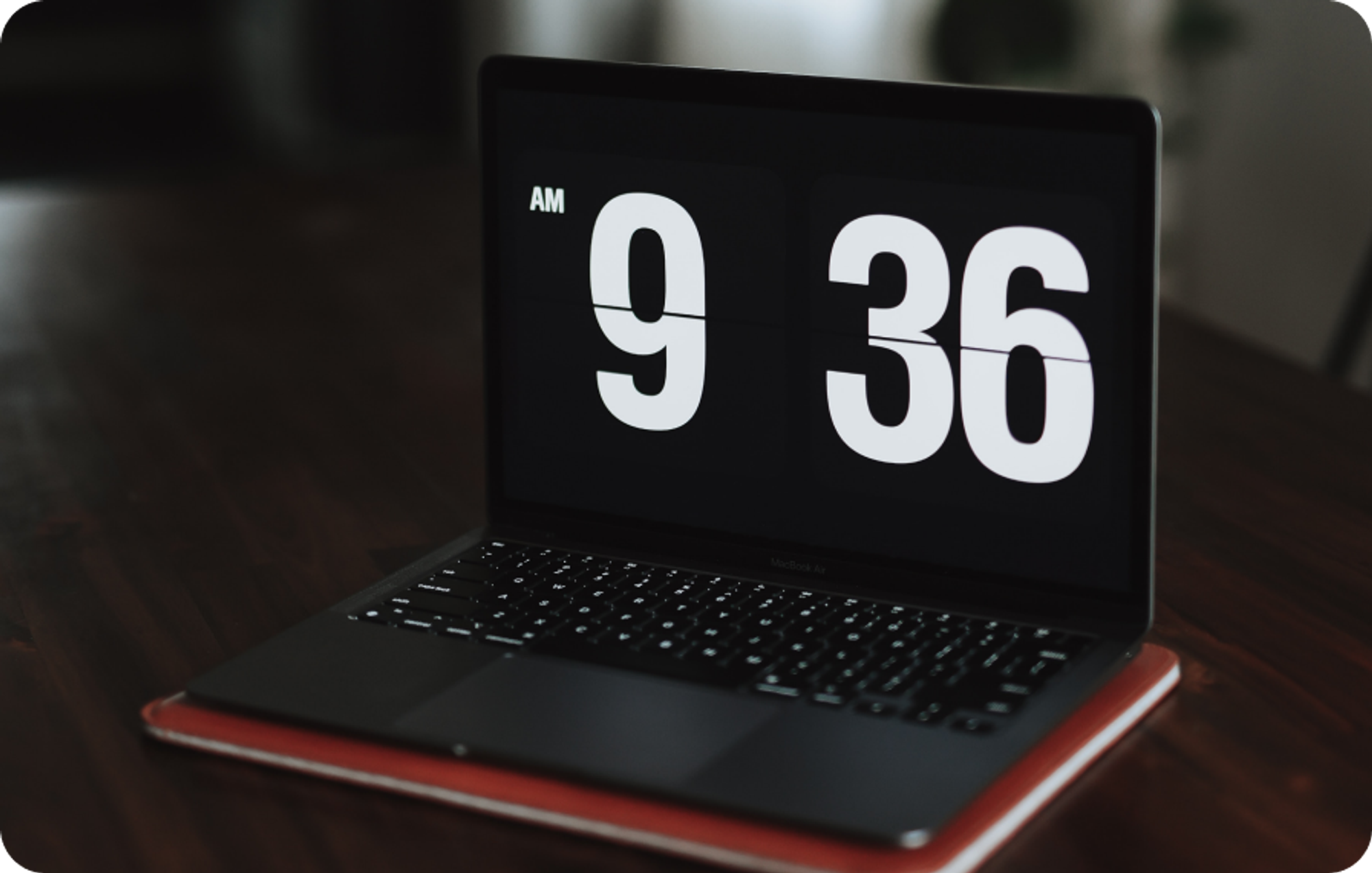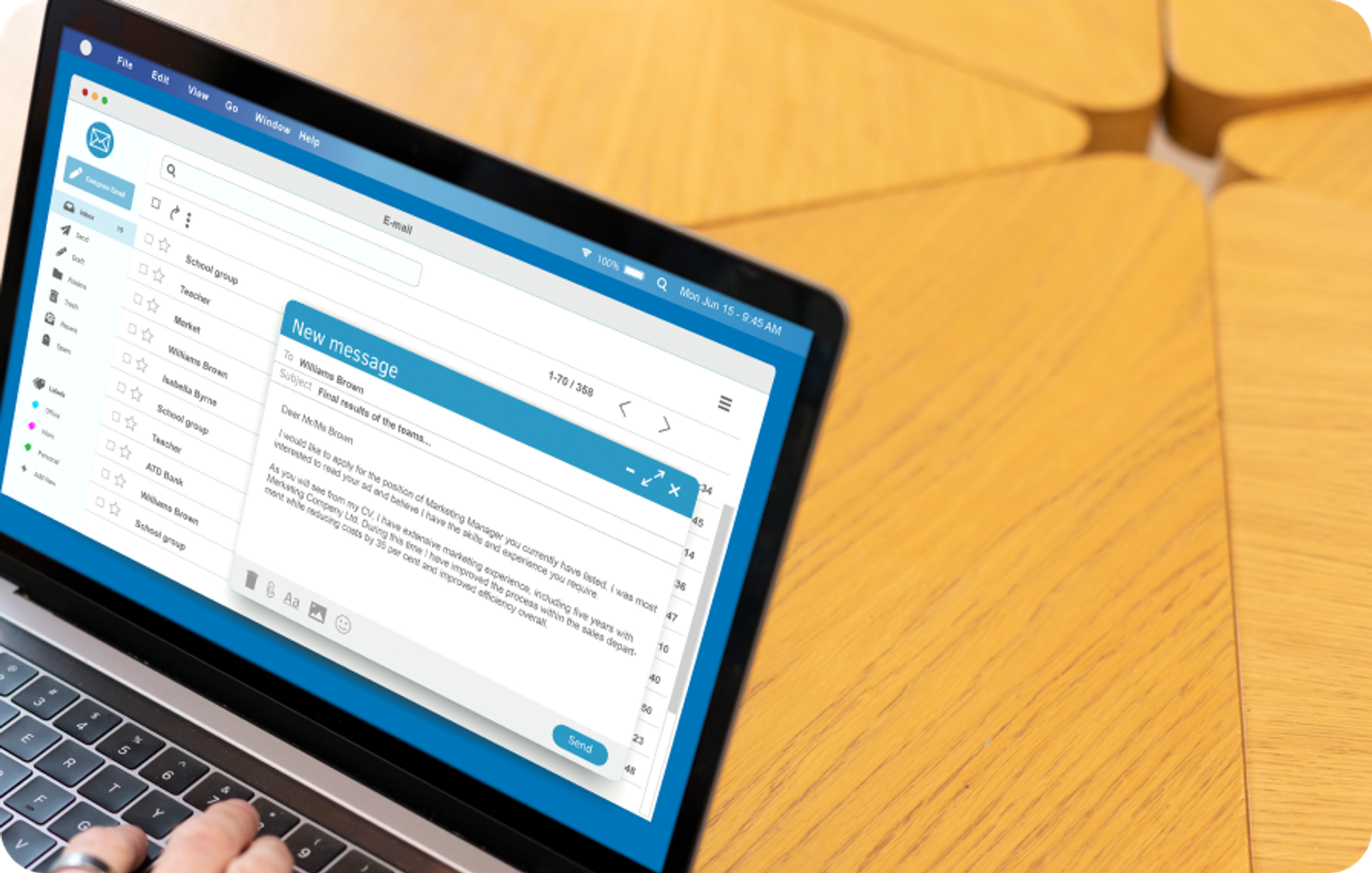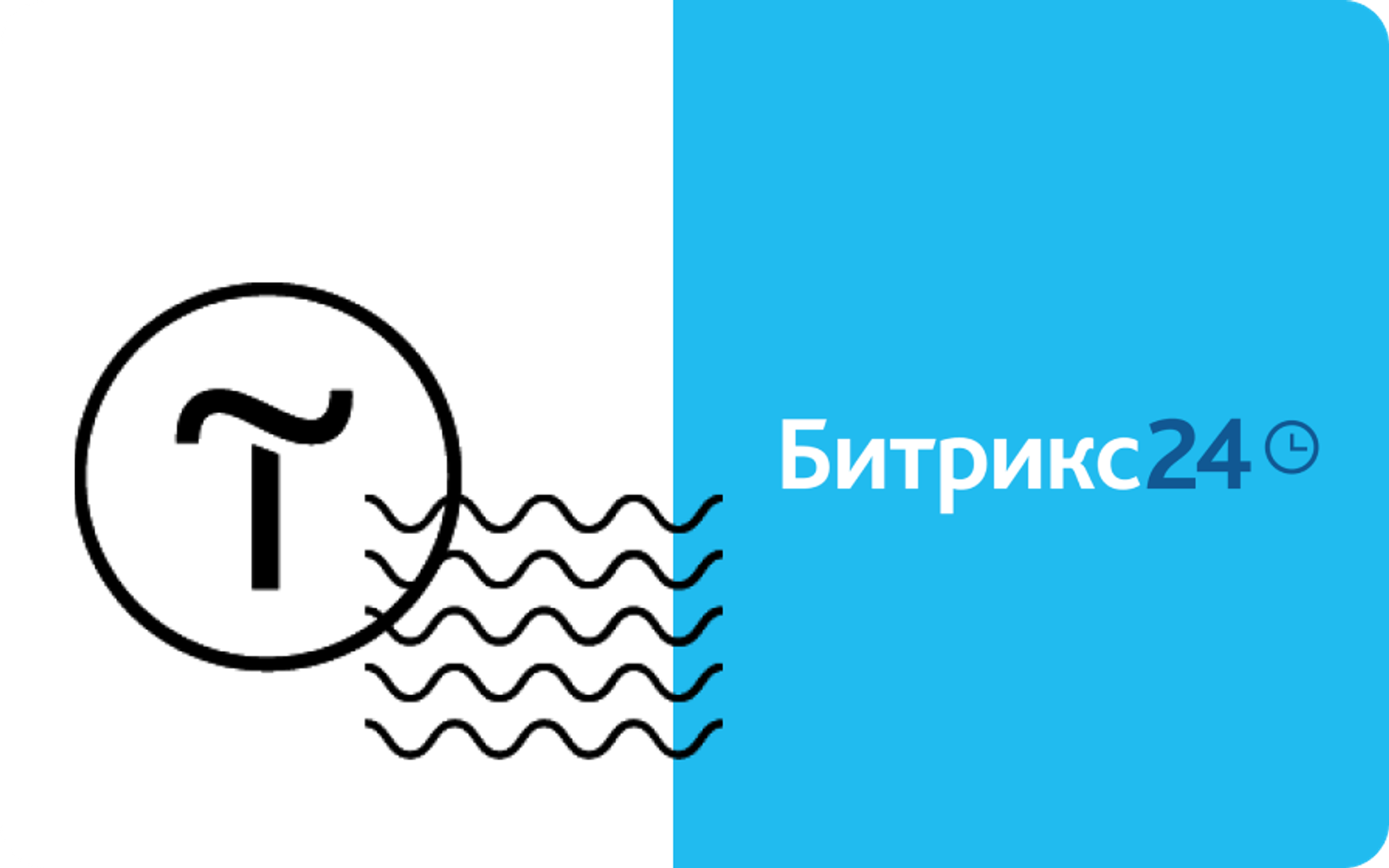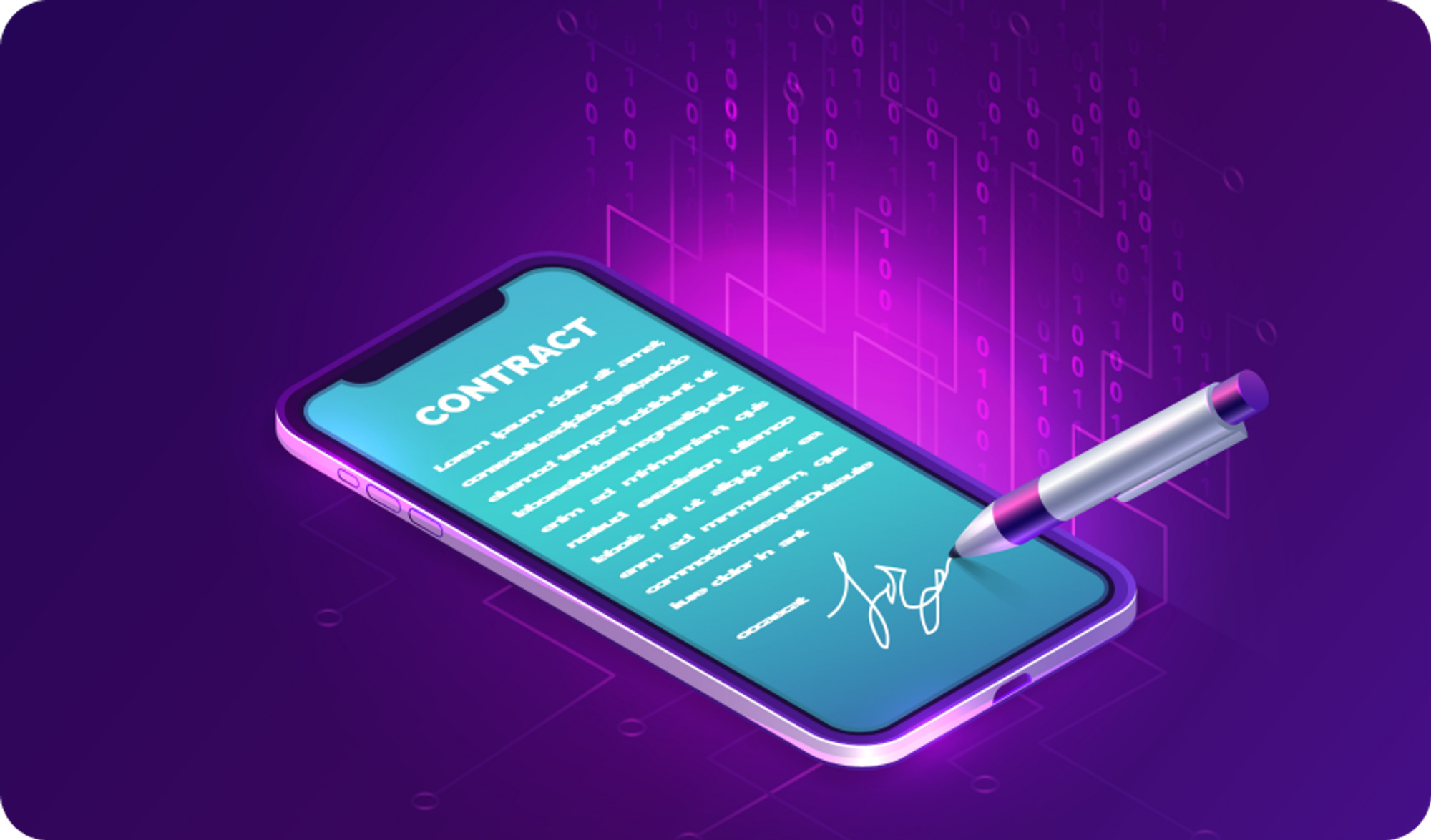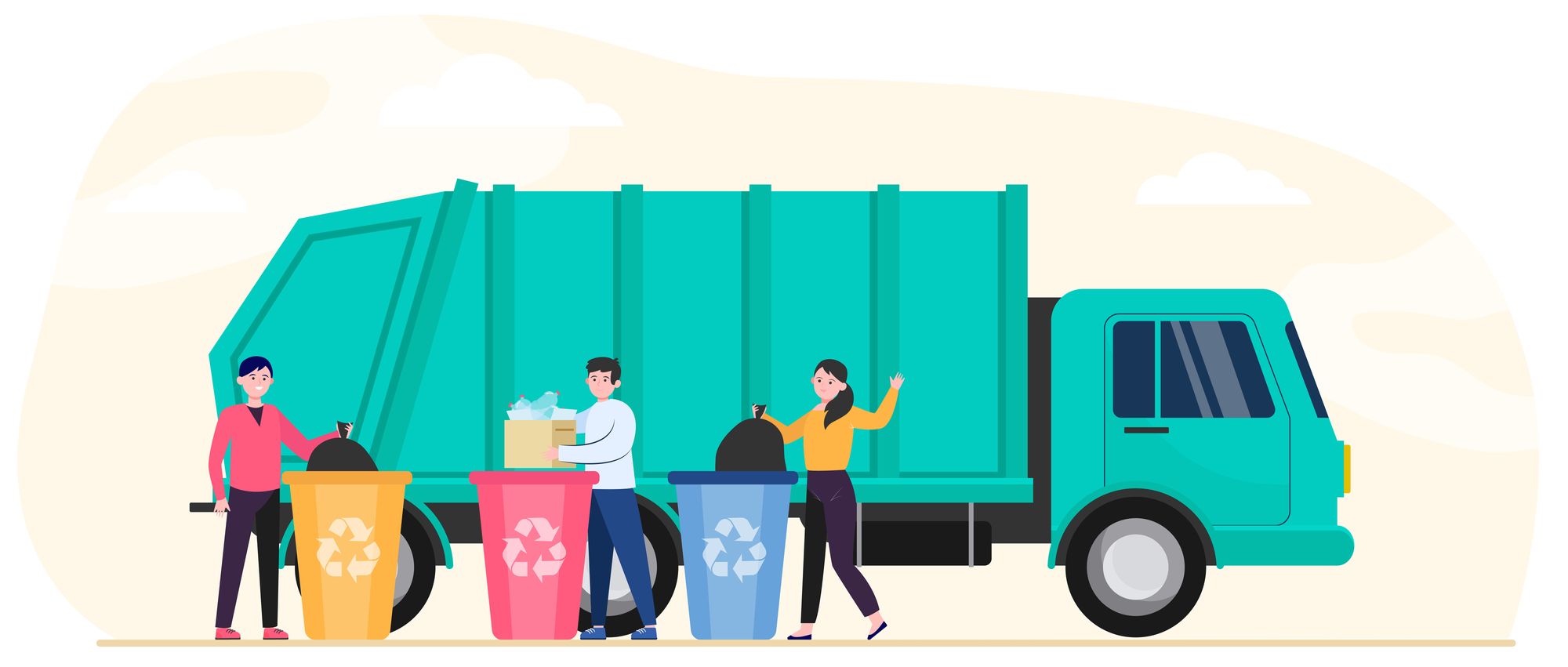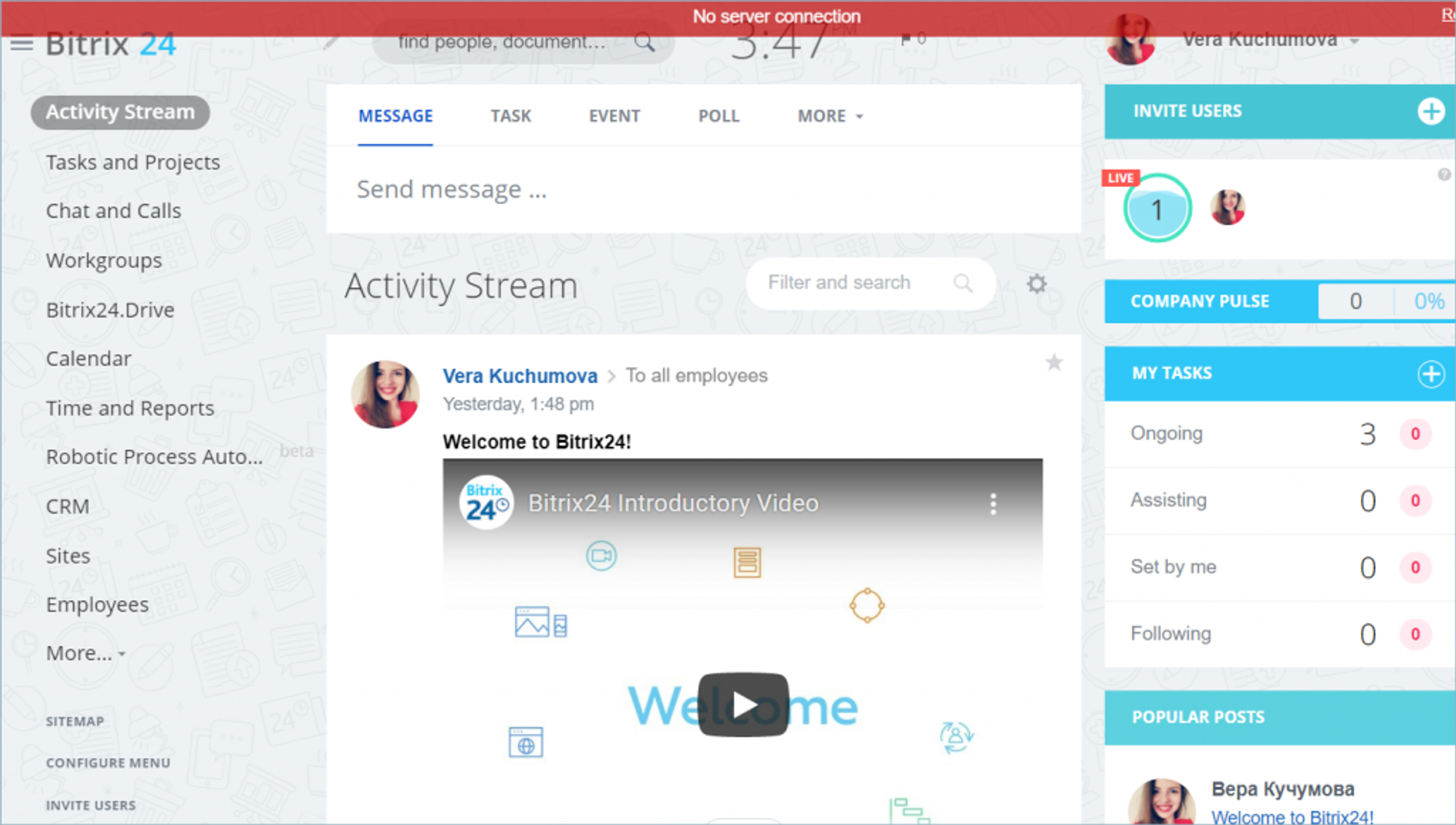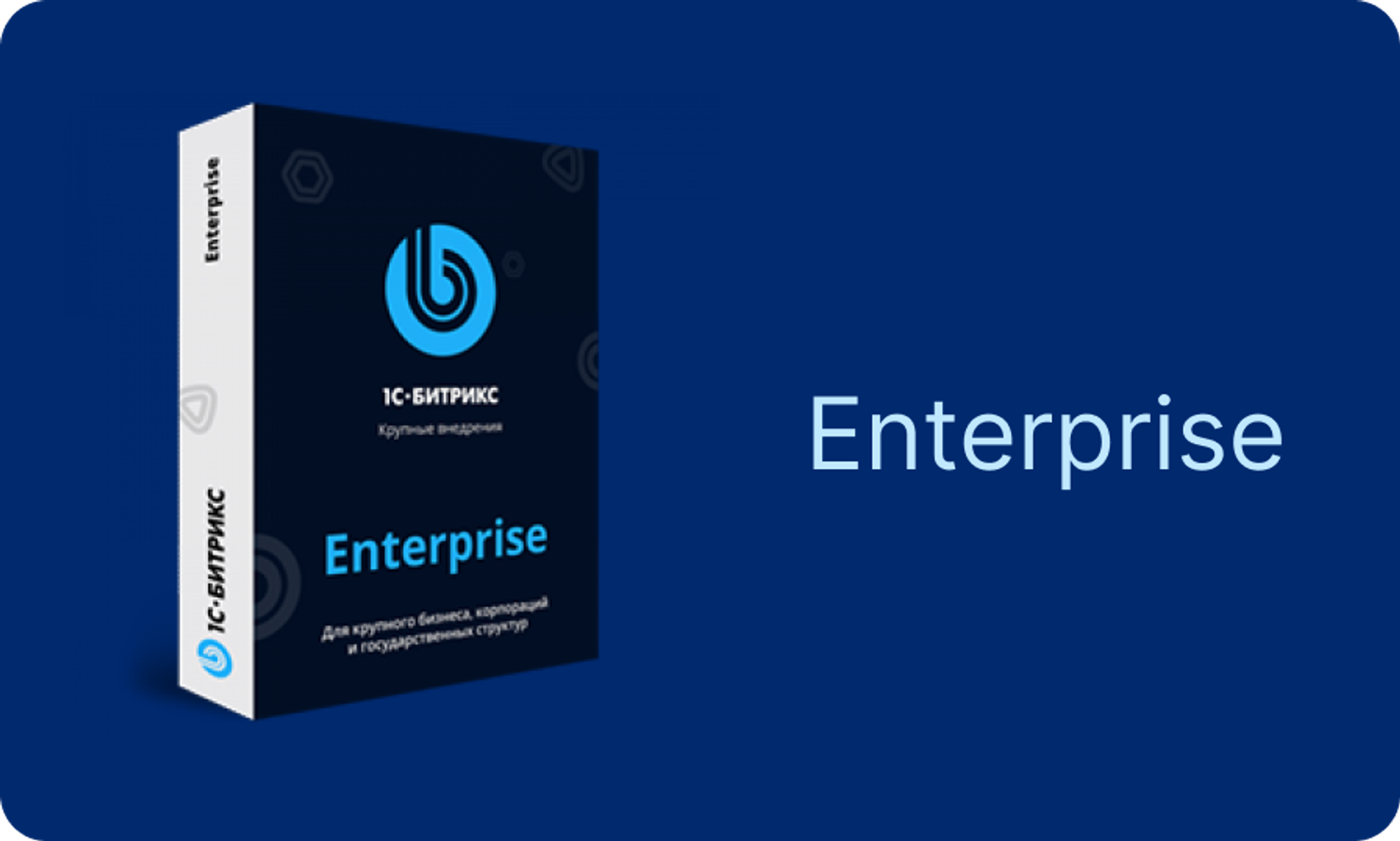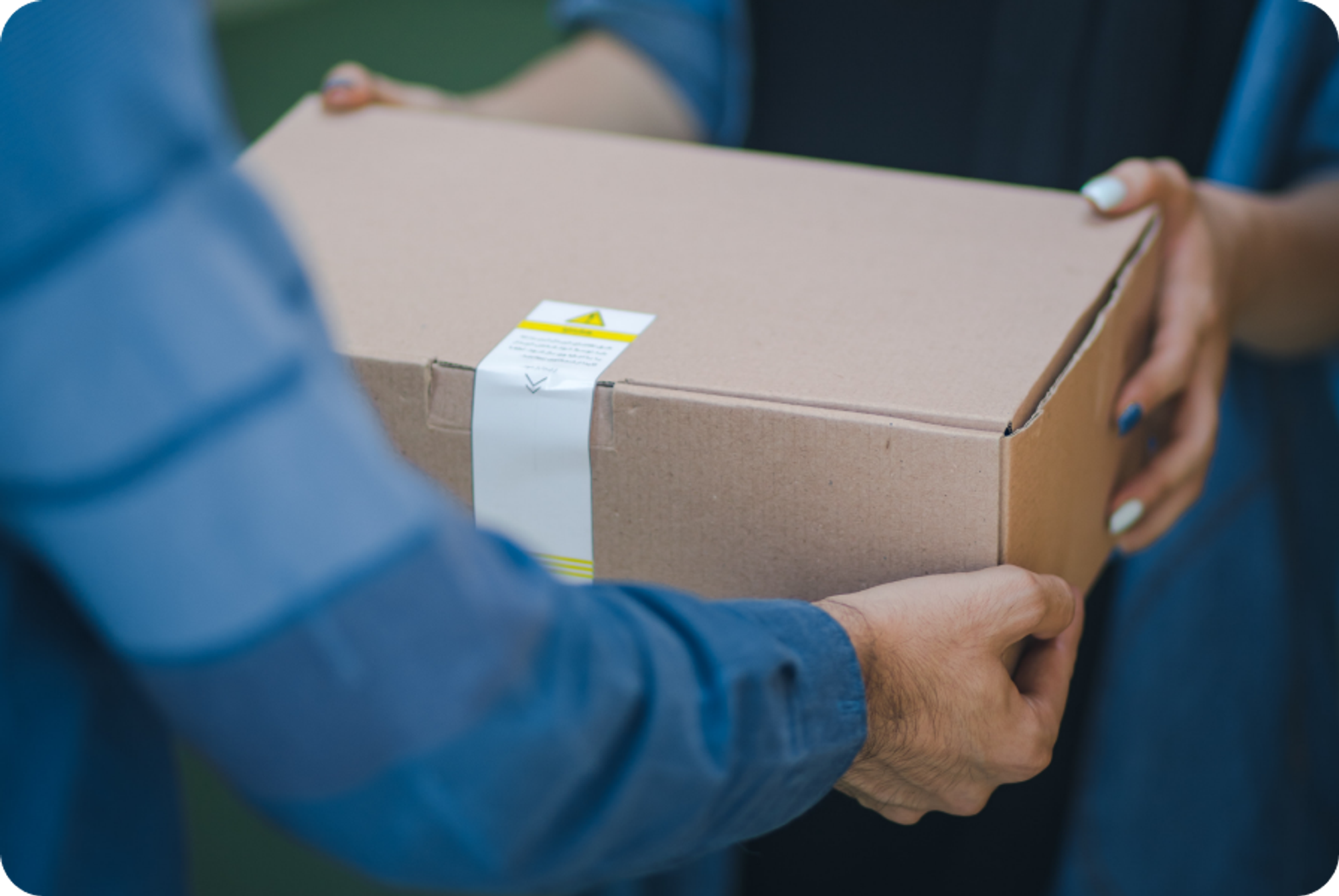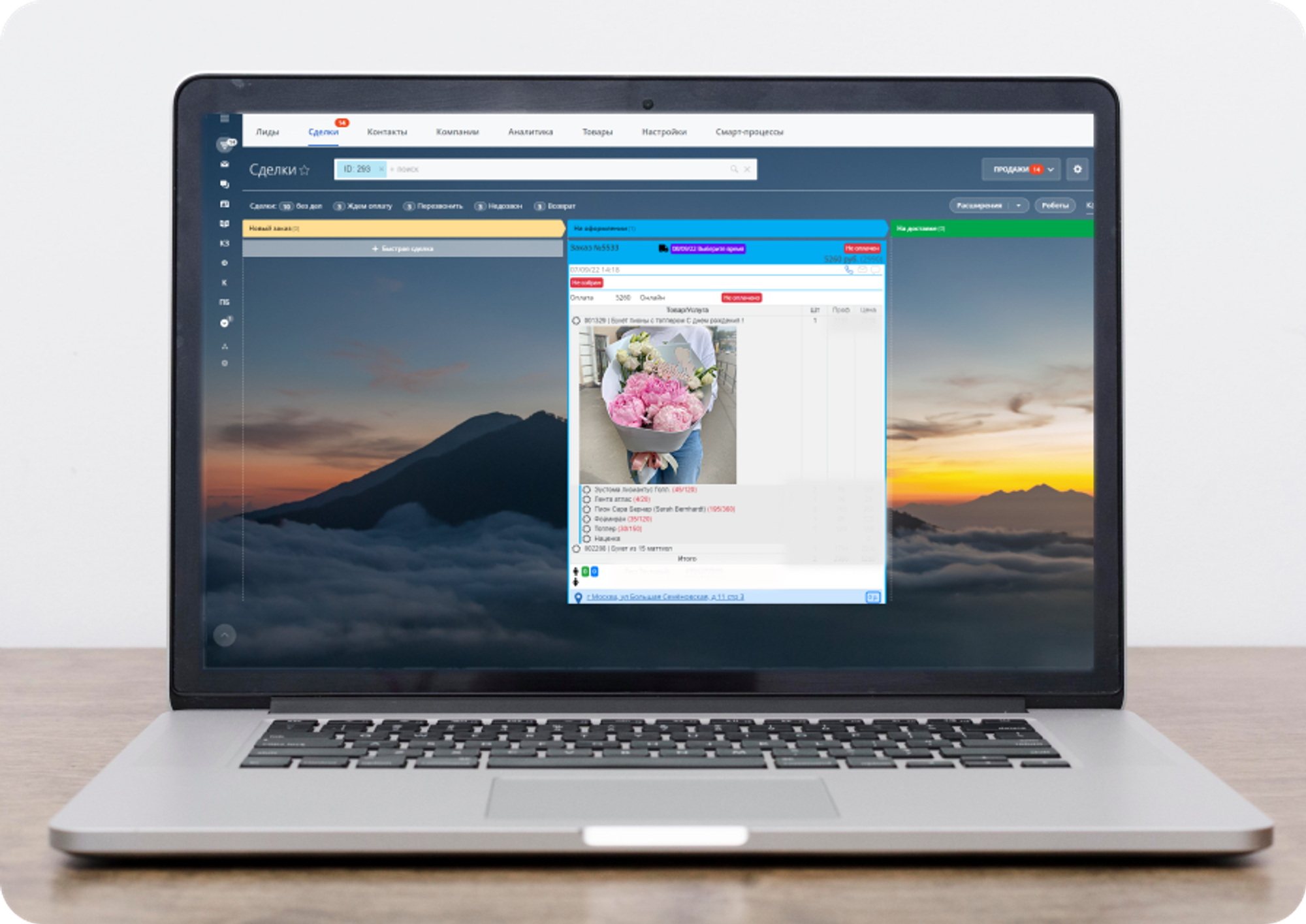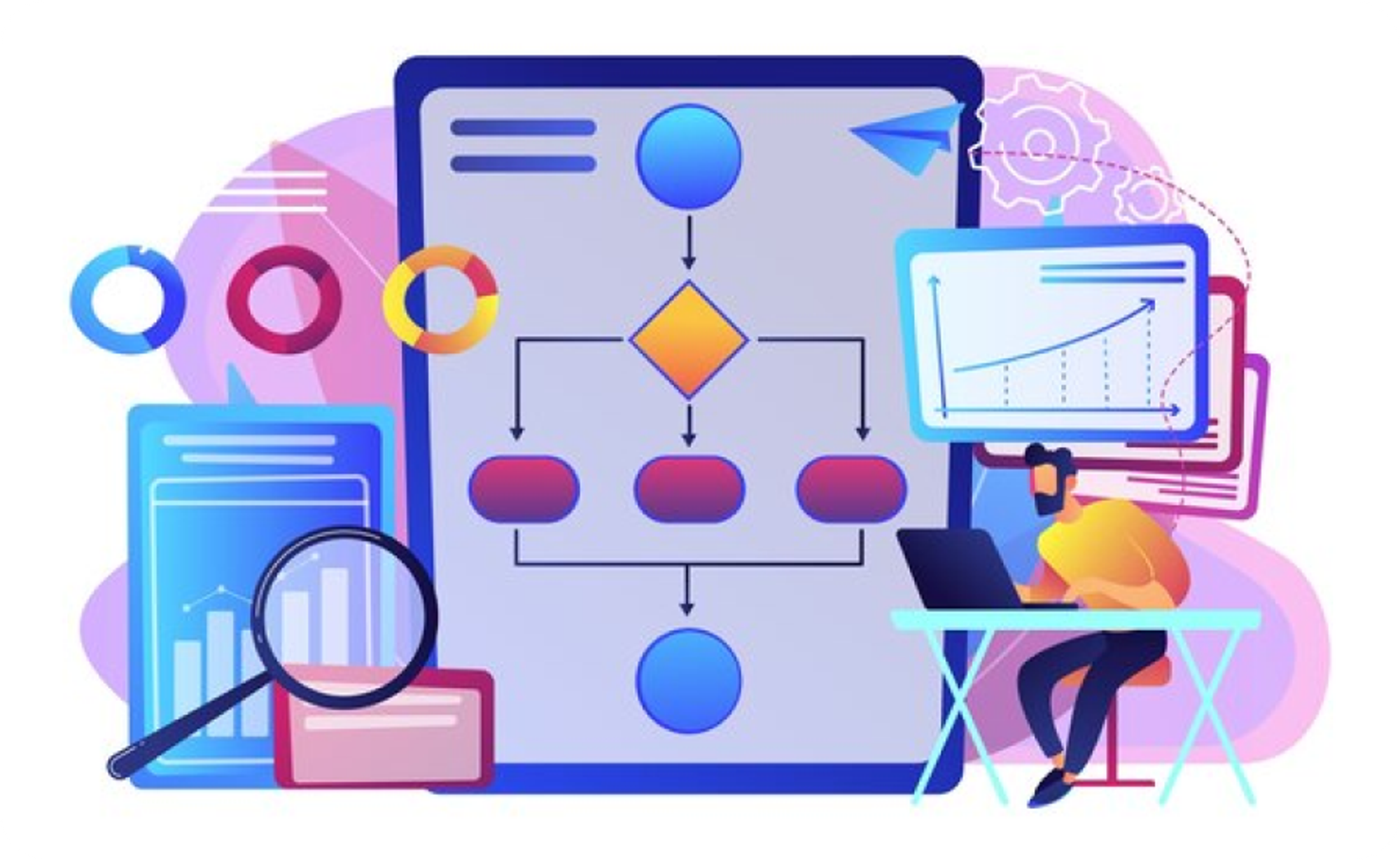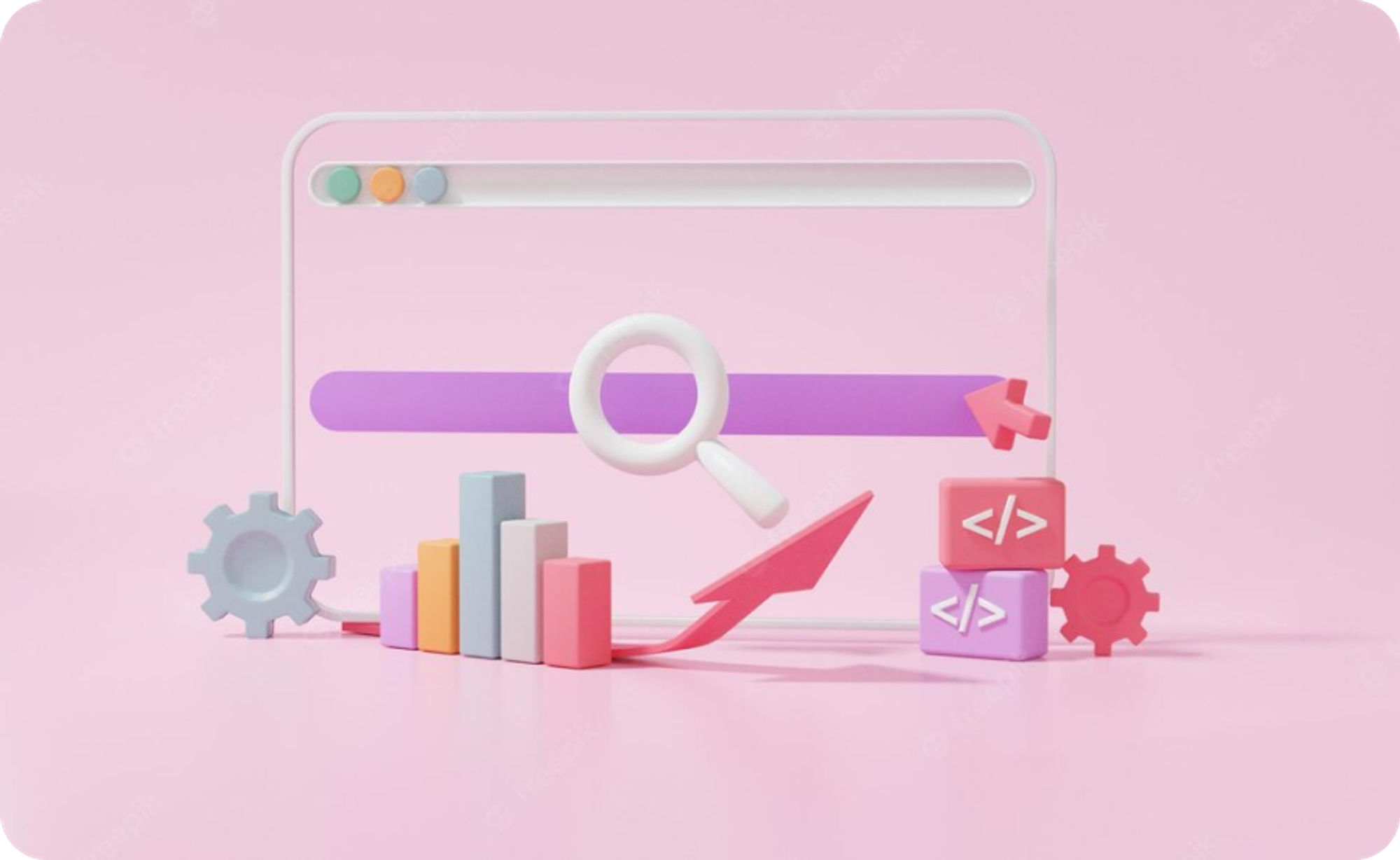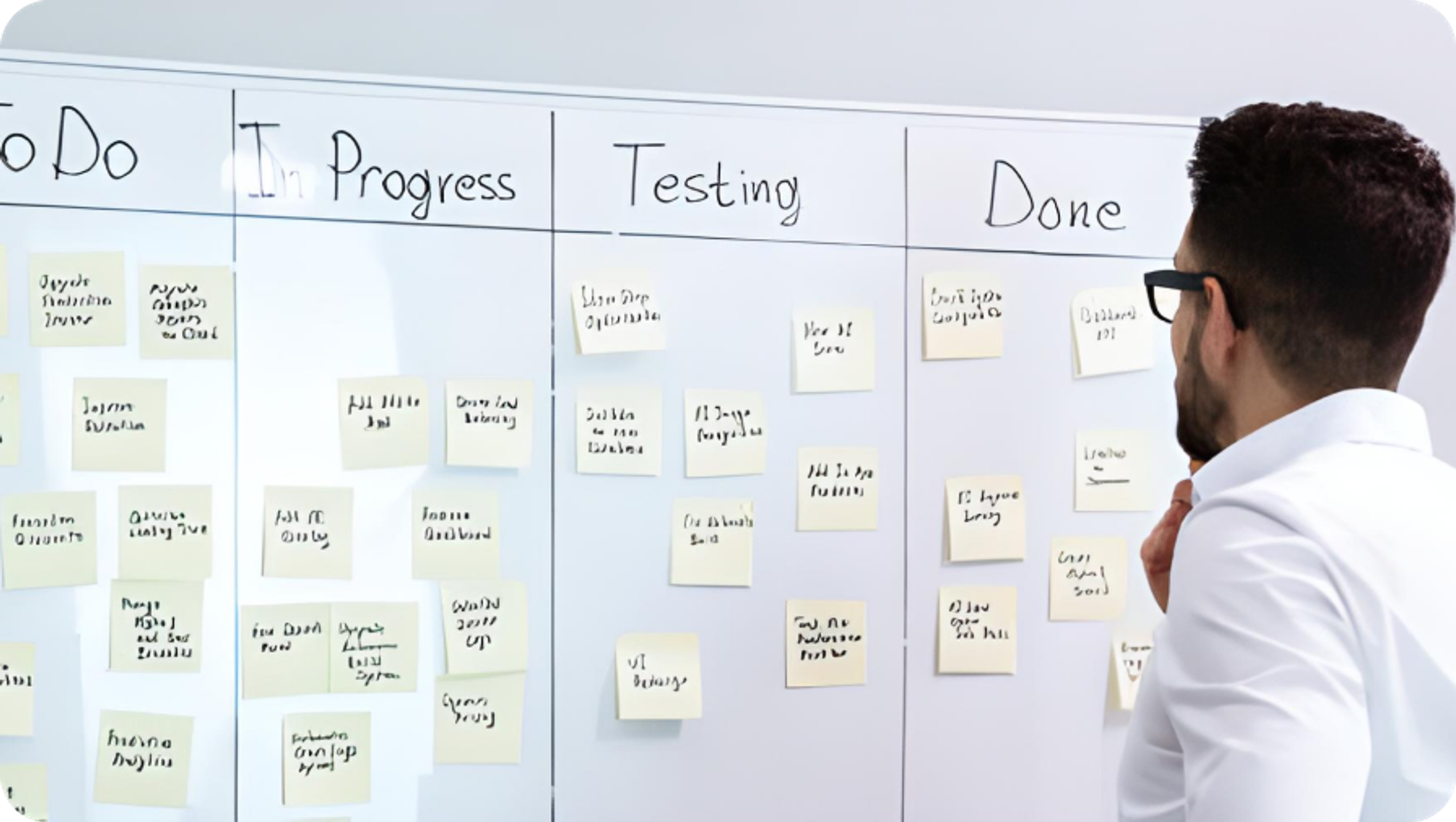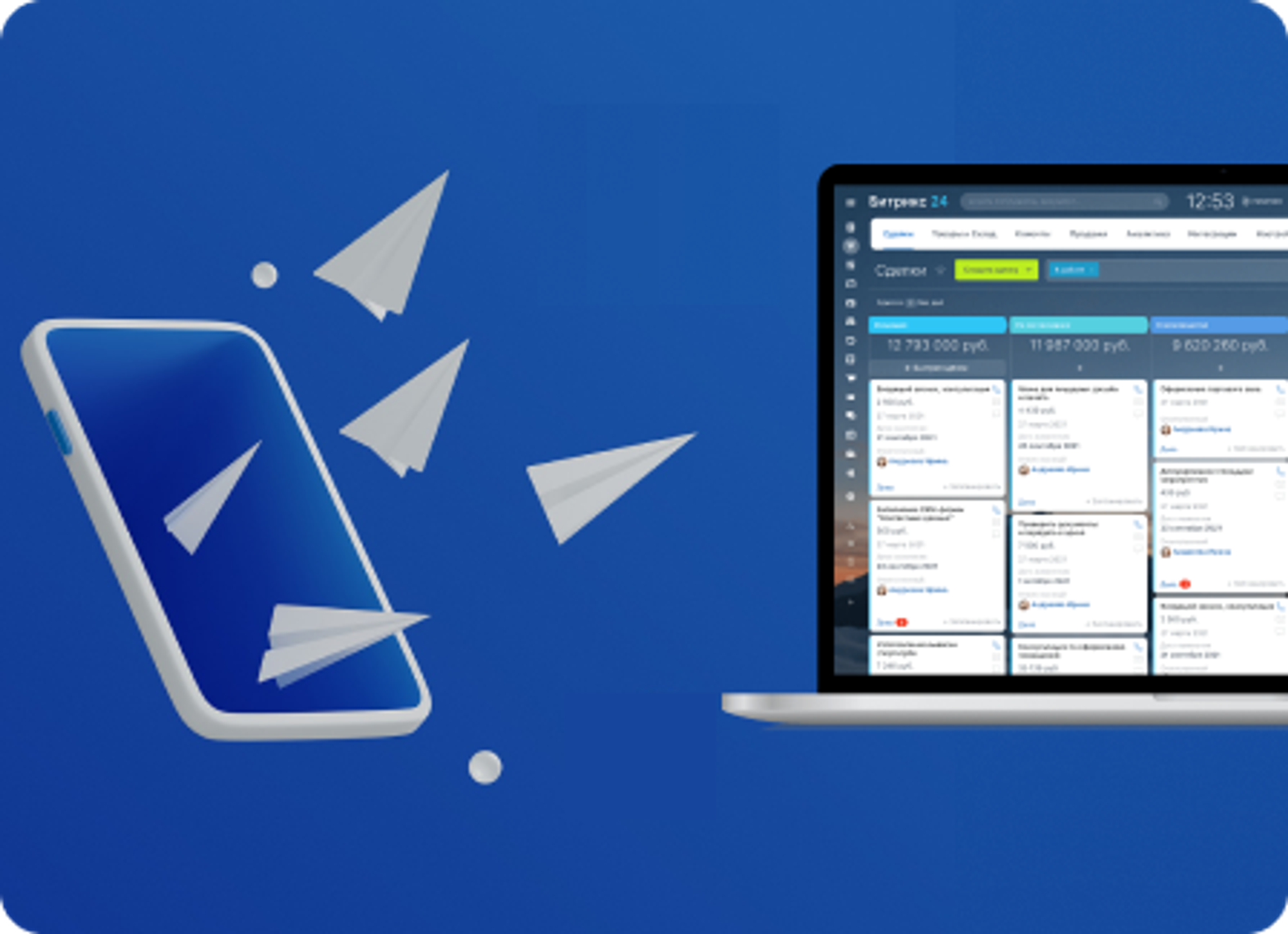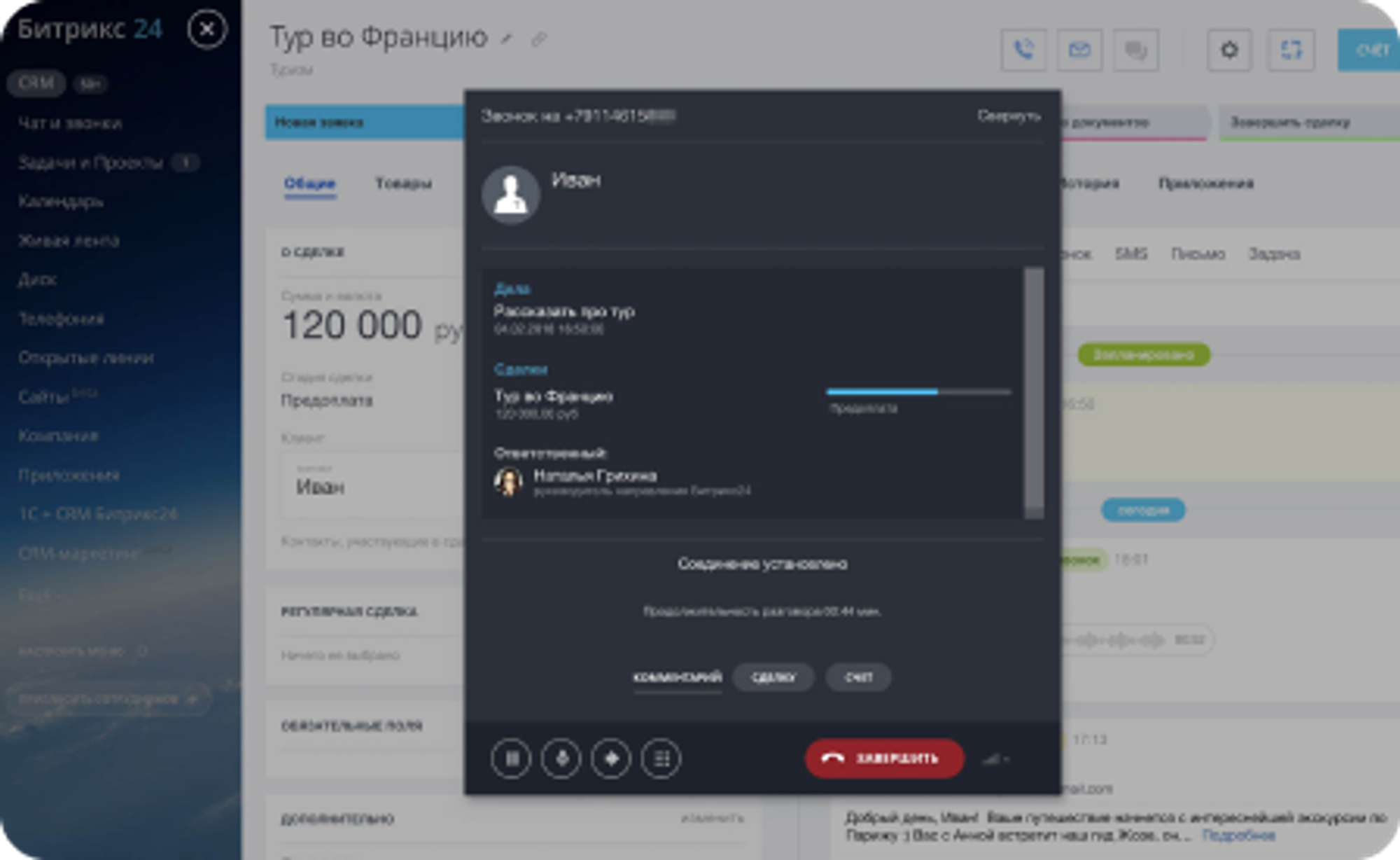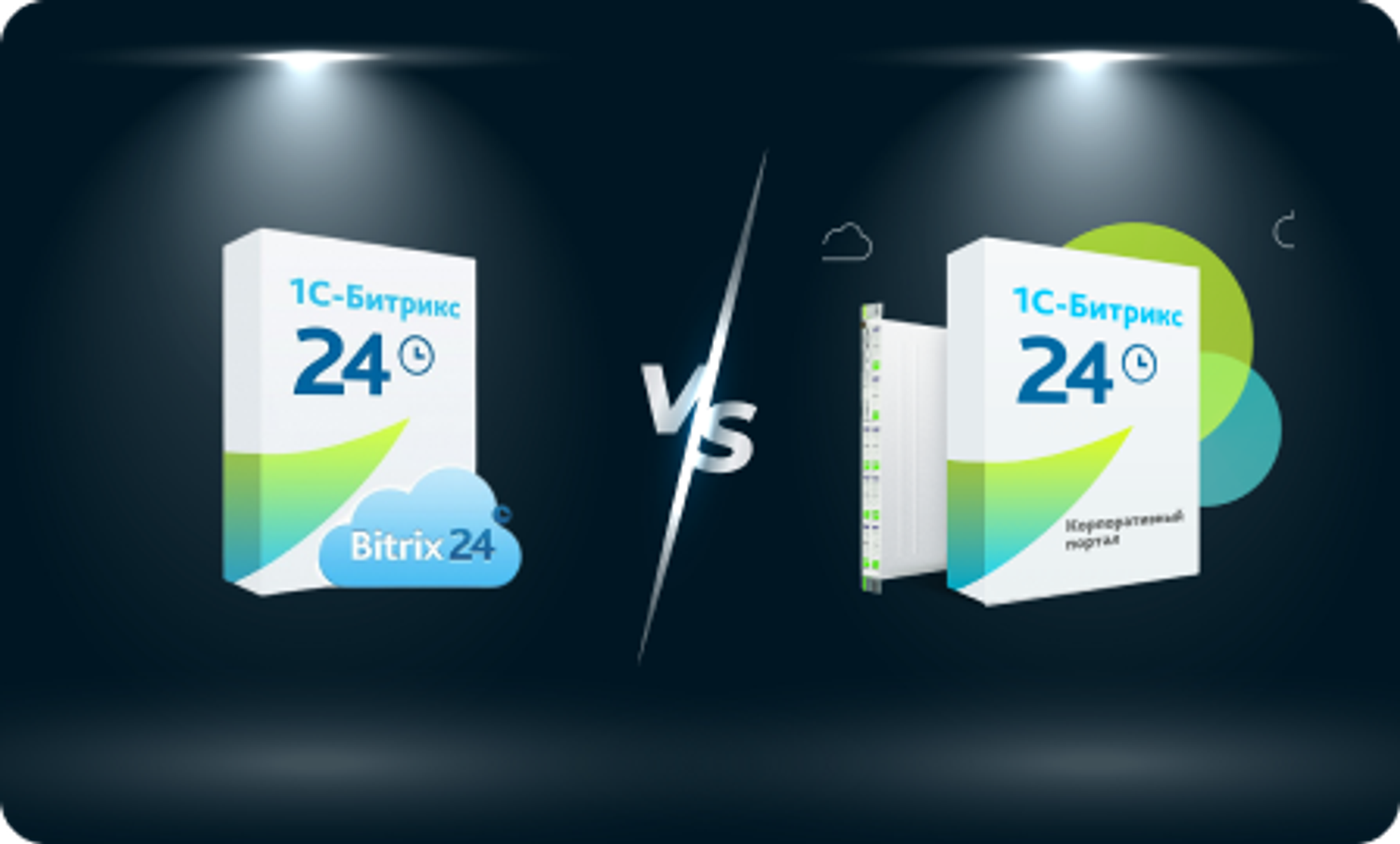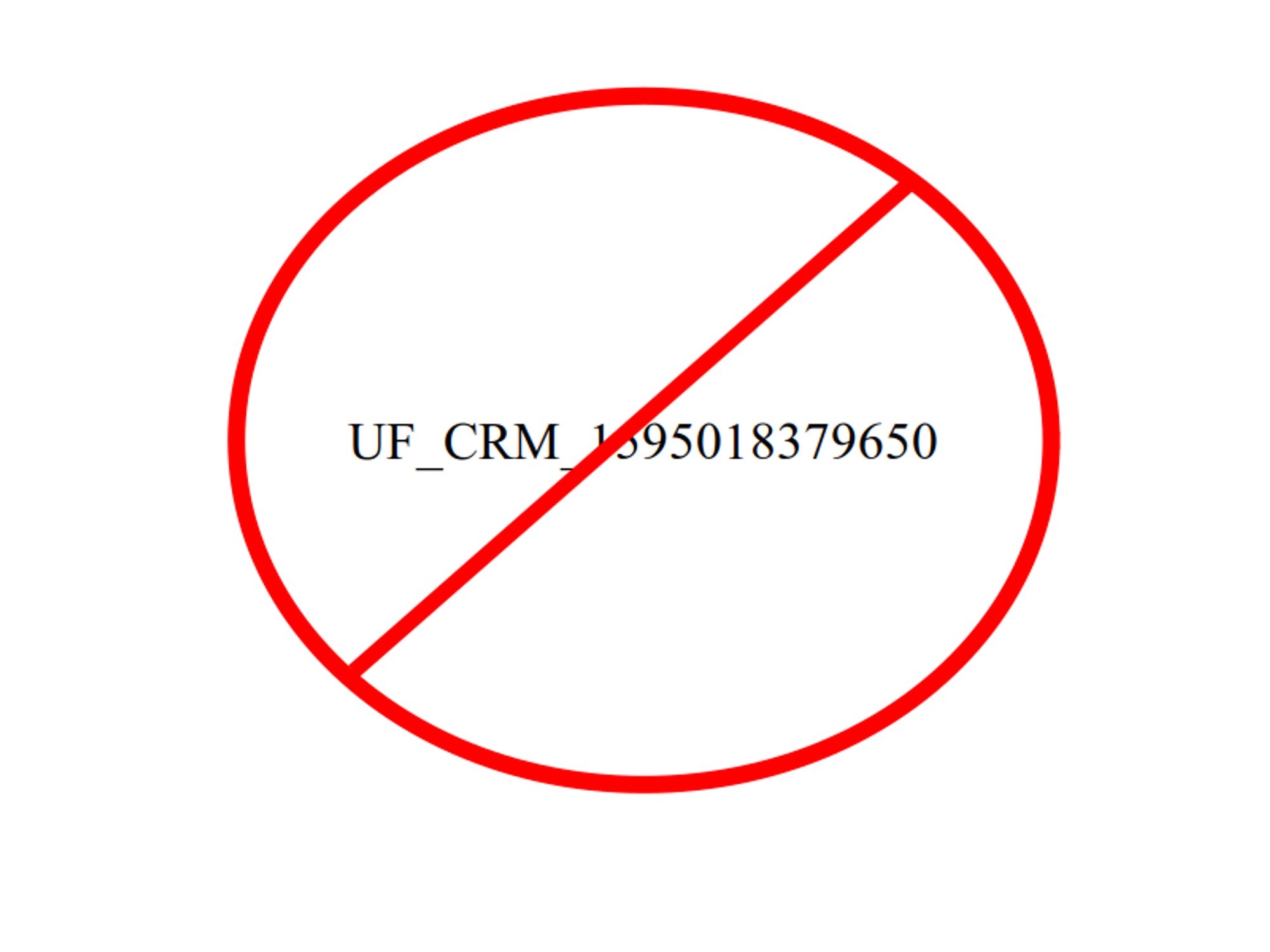
Автор статьи
Глеб Антоненко
In companies that sell and ship goods, in addition to the sales department, there is usually a customer service department that deals with customer support and resolving incoming claims.
There are different types of claims: not the entire order arrived, more goods arrived in the order, defective, the wrong goods were received, errors in the documents, etc.
The resolution of claims consists of two parts:
- When a claim arrives, it needs to be processed, an investigation needs to be conducted to determine who made the mistake and at what stage, and a decision needs to be made on how to satisfy the claim.
- Resolving the claim. For example, delivering a missing order, correcting errors in documents, providing a discount, etc.
We have created a process that includes all scenarios for resolving claims. Let's take a closer look at how this works using an example.
A claim was received from a client
The customer service department (CS) manager receives a letter with a claim regarding the order, contacts the client and clarifies the details, which he enters into the claim card.
Adds photographs, invoices, everything provided by the client.
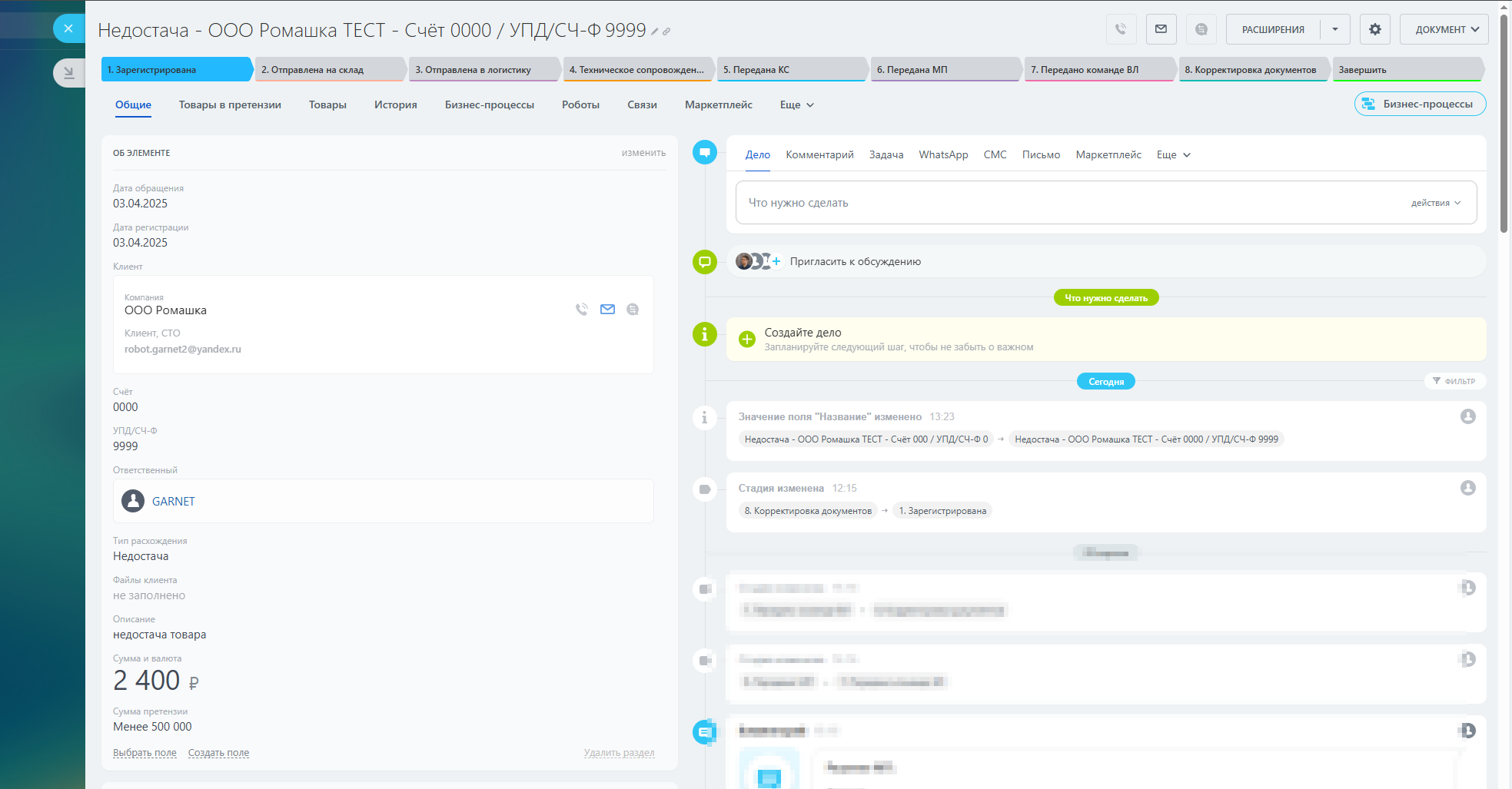
Type of claim
An important point in the process is to choose the type of claim, as this will affect its further consideration.
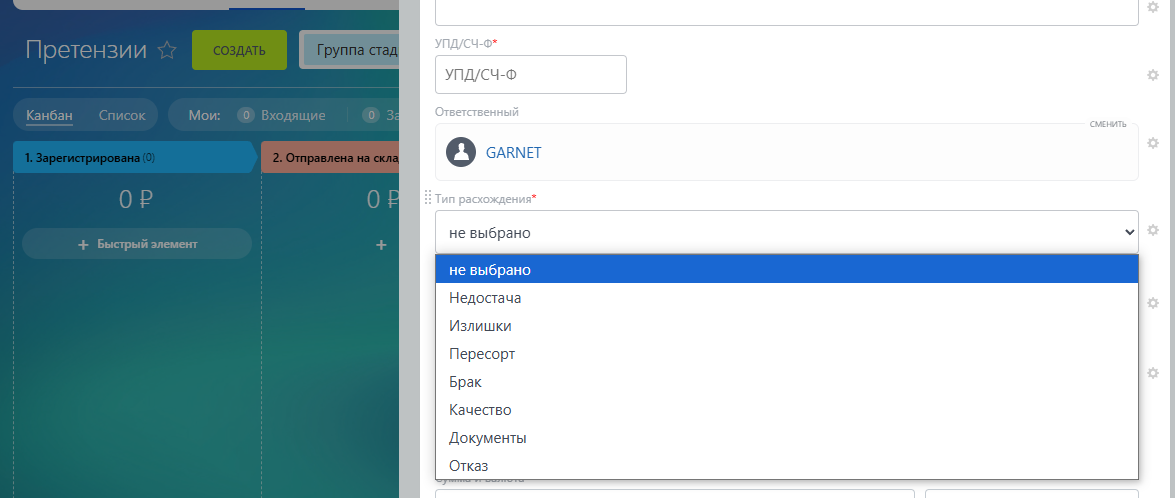
Shortages, surpluses, incorrect sorting, defects – these claims concern the warehouse and logistics, the investigation goes to them.
Quality – is considered by a separate technical support department.
Documentation, refusal - customer service specialists decide
Warehouse/Logistics Claims
Having received a claim with the note: shortage/surplus/wrong sorting/defective – you need to figure out whether the warehouse did not deliver/mixed up part of the order or it was lost/damaged during delivery.
Through automation, a task is sent to warehouse employees to process the claim.
The warehouse employee processes the request, studies the details of the claim and provides his comments, attaches files as evidence.

If a mistake was made on their part: they did not report part of the order, or the cargo was packed incorrectly from the supplier, etc., the employee puts a mark, writes comments and completes the process. After that, the claim is sent back to the CS for a decision.
If the error was not on the warehouse side, the claim is forwarded to logistics. All this works automatically after the warehouse enters the information.
Logistics employees also receive a notice of claim, take it into work and conduct an inspection on their part. They determine whether they made a mistake or not, leave a comment, add files and complete the process. Then it is transferred to the CS.
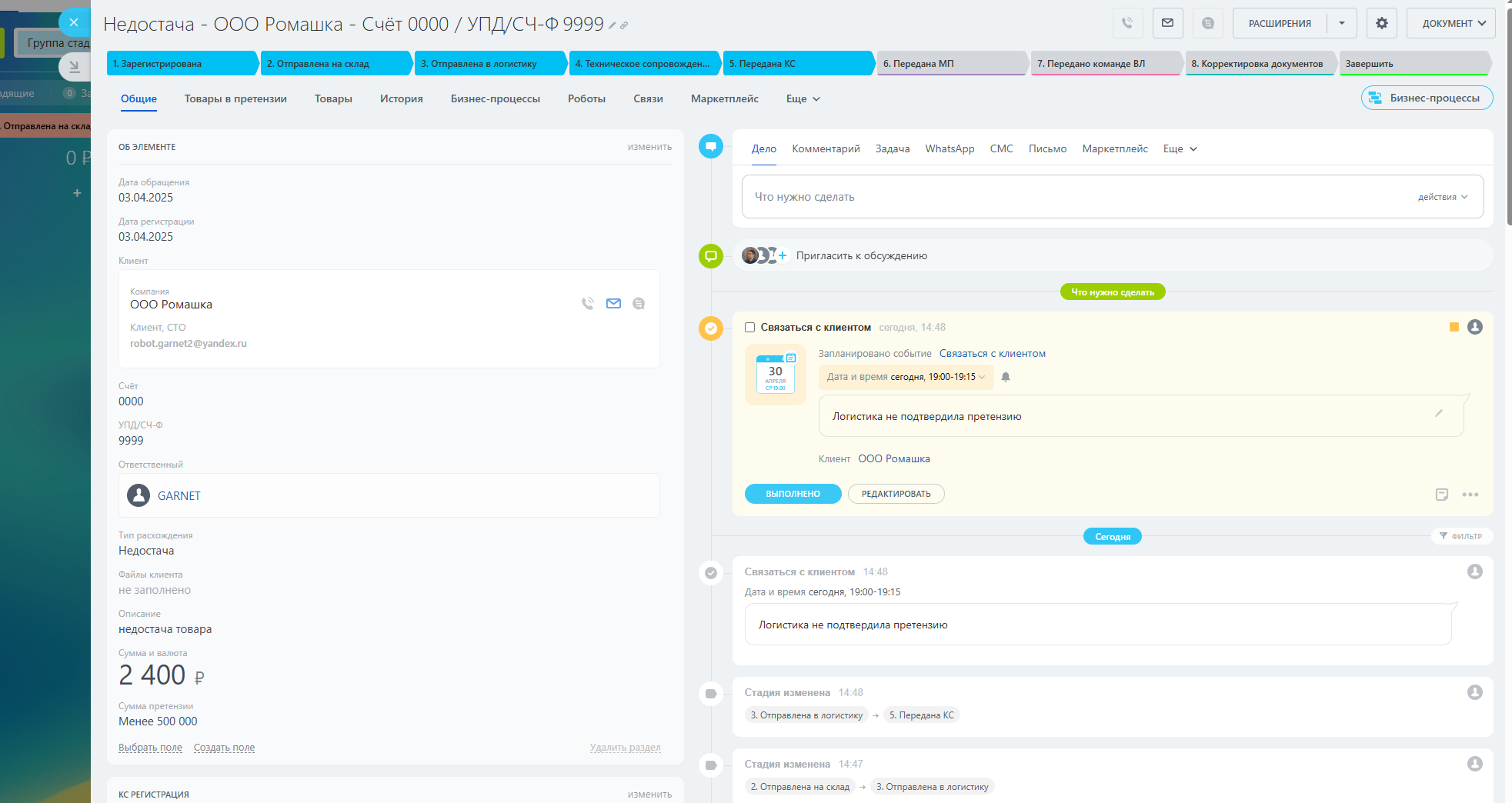
Coordination of the claim resolution
When the application is returned to the QC department, the specialist studies the comments of the warehouse/logistics or quality control department, on the basis of which he decides how to satisfy the customer’s claim and passes this decision to the sales manager.
The manager fills out a claim resolution, for example: delivery, return, discount on the next order, etc.
The claim is then forwarded to the head of the sales department for approval.
The ROP studies the warehouse and logistics comments, as well as the claim resolution. He can approve this resolution or offer another one. For example, instead of Delivery, offer the client a Discount on the next order.
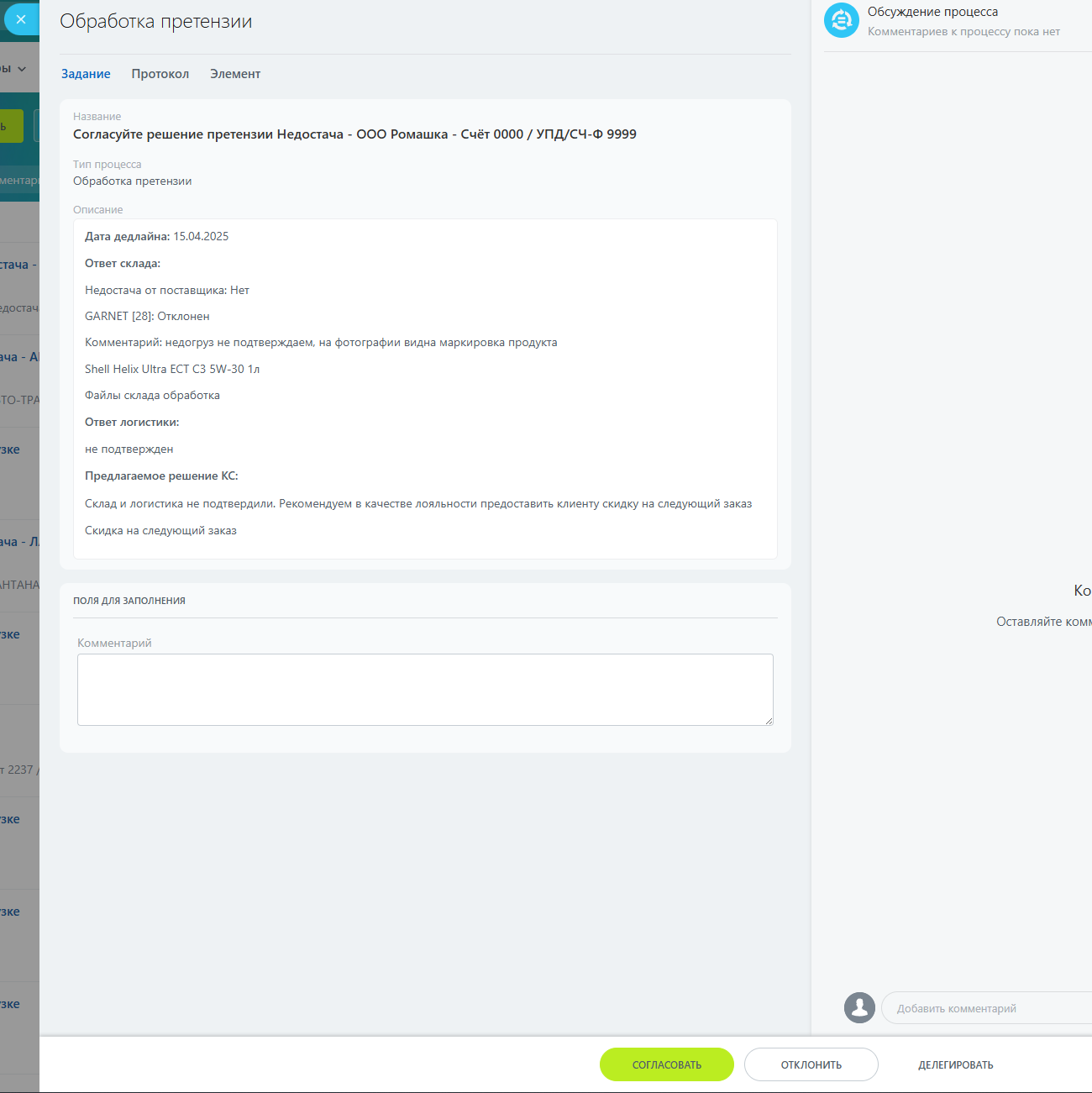
The manager contacts the client, agrees on a solution to the claim and leaves a note in the claim.
Quality claim
If the KS manager specifies the claim type as “Quality”, the claim does not go to the warehouse or logistics, but is resolved either by the KS department or transferred to Technical Support for laboratory analysis.

At this stage the process can be up to 1 month, as the examination takes a long time. After that, the specialists fill out the information and the decision, and the claim is sent back to the Constitutional Court for approval.

Claim on documents
If there is any mistake in the documents, the customer service itself resolves this claim. Not all departments are involved here either.
The KS manager makes corrections to the documents, sends them to the client and closes the claim.
Resolution of the claim
At this stage, everything was clarified and agreed upon with the client. The claim was forwarded to the internal logistics team to ensure a solution.
For example, you need to collect excess from a client.
The KS indicate the address and contact details of the client, and transfer them to logistics. Logisticians indicate the date of collection of the goods, the details of the car and the driver.
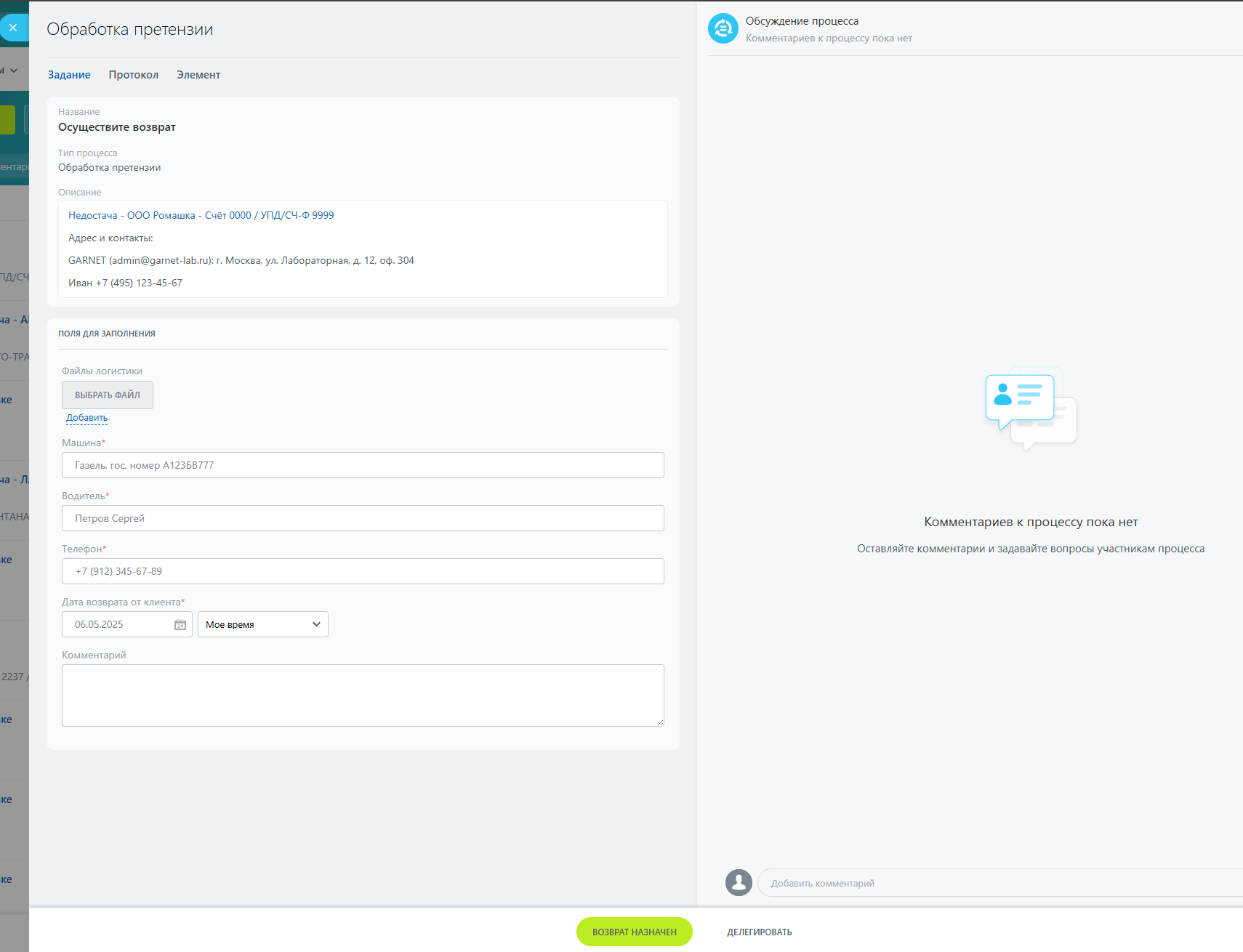
When the goods arrive at the warehouse, they are accepted and the date is recorded in the system.
The process is transferred to the Constitutional Court for document adjustments and the claim is completed.
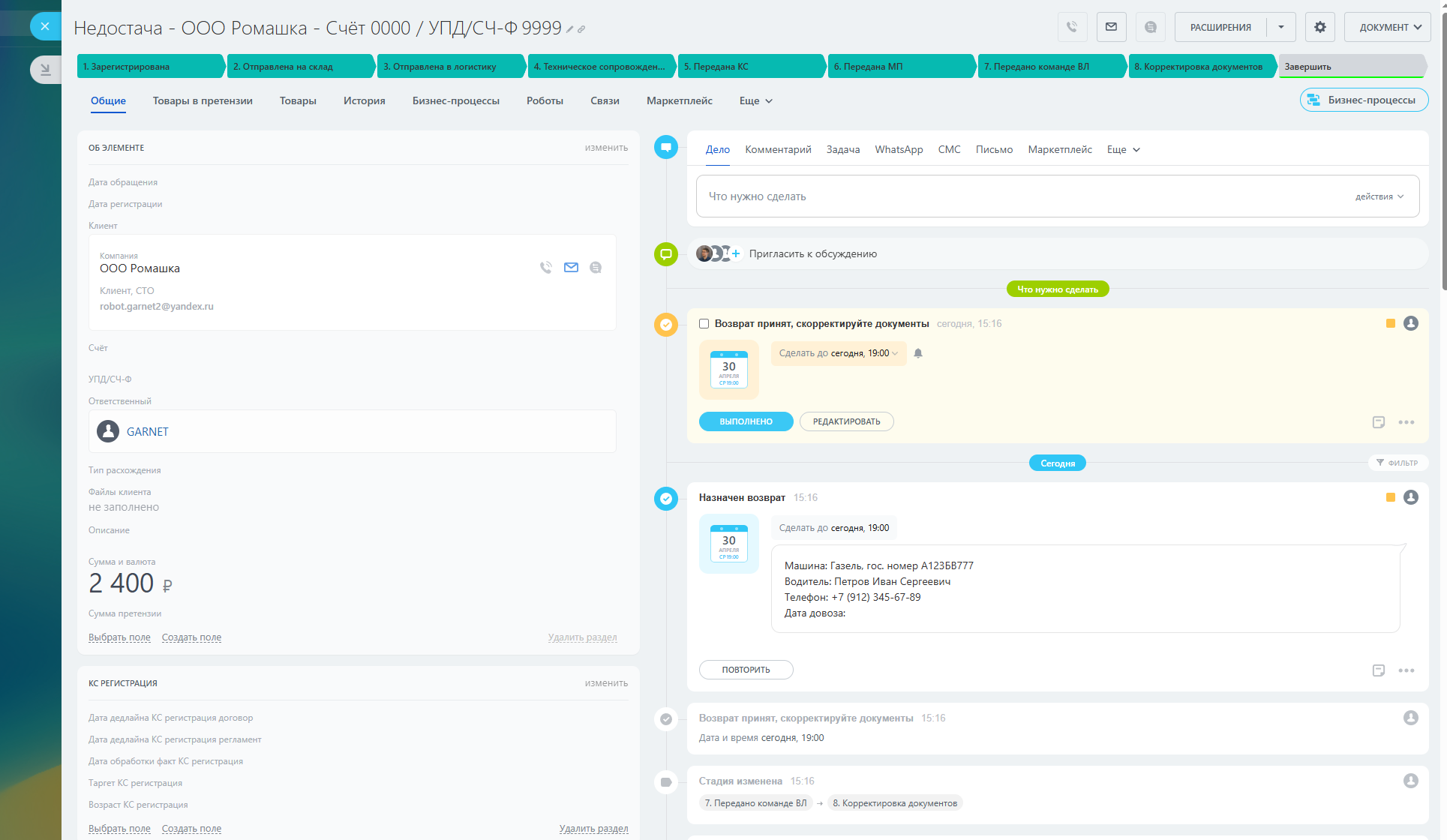
Important details of the process
Fixing dates at each stage
This takes into account the timeframes for how long a specific department can spend on resolving a claim. The countdown starts from the moment the claim is registered in the system.
For example, a warehouse has 3 days to process a claim, and logistics has the same.
Customer service must promptly forward the claim to them, within 1 business day.
Employees see deadlines in the complaint and promptly resolve it.
The maximum time for a decision is 7 days, but they are processed faster.

Discrepancy in goods
All claims are somehow related to the product, but since Bitrix24 has a limitation of product item fields, where you can only specify the quantity of products, we have set up a separate process in which other indicators are specified:
- Quantity (fact)
- Quantity in document
- Discrepancy
This allows you to keep track of all the information about the product immediately during the process and seediscrepancy in the quantity of goods.

The total is calculated hereamount of discrepancy of goods, which affects the claims resolution process. If the discrepancy amount is up to 500,000 rubles (any value can be set here), then the claim will go through the specified automation as described above.
If the amount of the discrepancy is higher than 500,000 rubles, then the Commercial Director is immediately added to the decision of the claim. Together with the ROP, he decides how to satisfy the claim and the process goes to the sales department manager.
Benefits of process automation
Increasing customer loyalty
The process allows you to track the time spent at each stage, all acceptable dates for resolving claims are recorded, which allows you to resolve them as quickly as possible, sometimes in 1 day.
Identifying and solving internal problems
Employees from different departments are involved in resolving the claim only at the right moment.
The company can track:
- how many complaints are received in total, what is the workload of managers, in principle, are there many complaints or not;
- what type of claims arise most often;
- which department makes more mistakes. For example, most often complaints come about one specific warehouse or one of the logistics companies delivers defective goods;
- Which manager's clients most often receive complaints from?
This allows you to make decisions and minimize errors.
Have questions or need to find a solution to Your problem?
Leave a request by filling out the feedback form. Our expert will contact you as soon as possible













